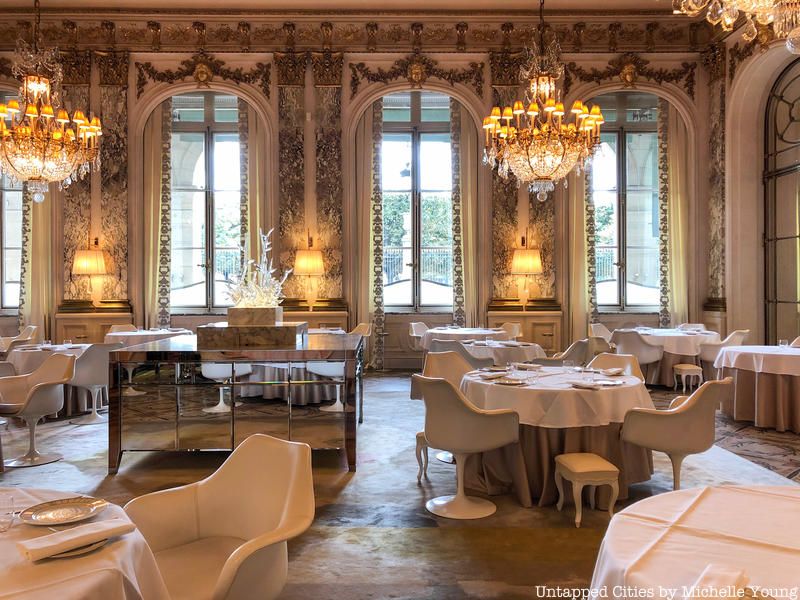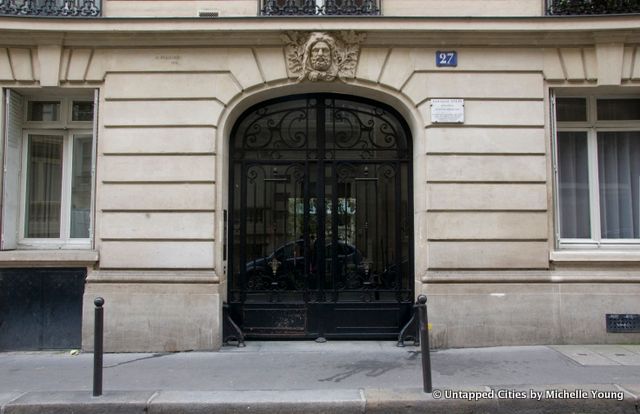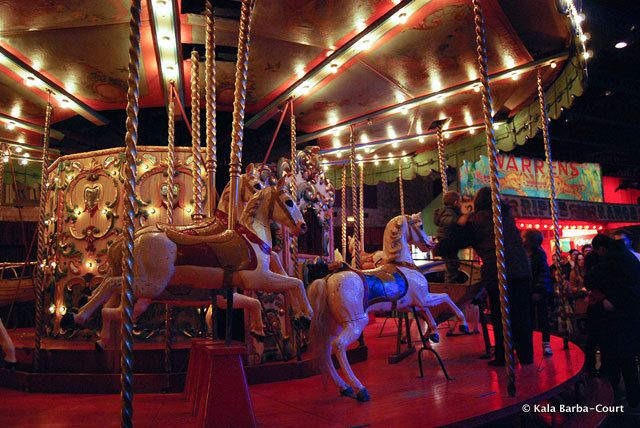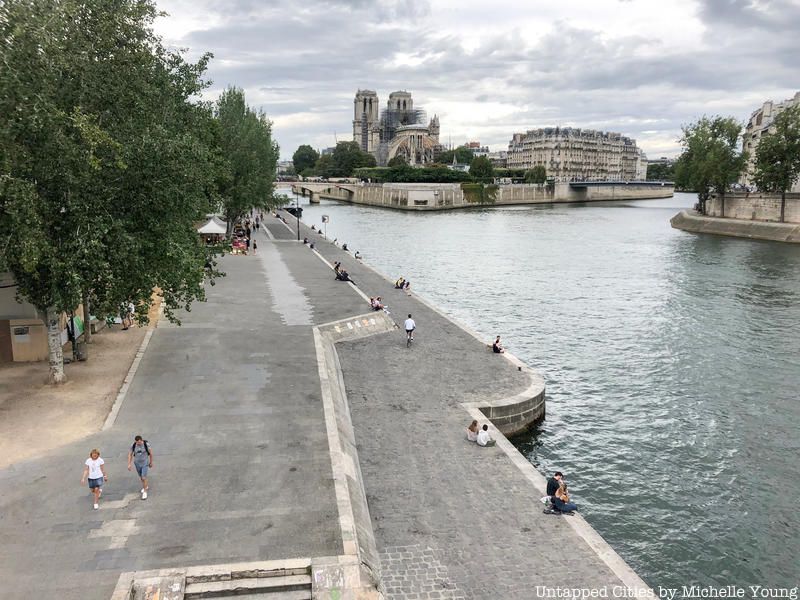Last Chance to Catch NYC's Holiday Notalgia Train
We met the voices of the NYC subway on our nostalgia ride this weekend!


Woody Allen packed his film Midnight in Paris with so many notable spots that besides the conspicuous halls of Versailles, it is difficult to pick them all out. Not taking into account the initial montage of Parisian landmarks, these are ten of our favorite spots, ranging from Maxim’s to the Quai de la Tournelle.
The first (awkward) lunch we see Gil and Inez have with her parents takes place at this 200-year-old establishment. Currently under the direction of chef Guy Martin, the lavish interior matches the 3-star meals for which the restaurant is known. It opened in 1784 as Le Café Chartres and as the surrounding cafes began to close, it turned into a luxury restaurant frequented by the likes of Napoleon Bonaparte, Voltaire, Simone de Beauvoir, and Henri Balzac. The name comes from the owner during the Restoration, Jean Véfour. Despite several changes in owners and a closing that lasted from 1905 to 1947, le Grand Véfour remains a fixture of the Paris experience.

The couple attends a wine tasting on the terrace of this historic hotel. Its story dates back before the Revolution to 1777 Calais. Le Meurice as seen in Midnight in Paris has been around since 1835. In real life, Salvador Dalí spent one month of every year living here. Other famous patrons include: Tchaikovsky, the Shah of Iran, who lived here when he was being deposed by a revolution, and Picasso, who held a wedding dinner there. During WWI it operated as a hospital for wounded soldiers. Le Meurice is owned and operated by the Dorchester Collection, part of an arm of the Ministry of Finance of Brunei, which runs 10 luxury hotels worldwide.
Since 1885, thrifty shoppers have been able to visit this flea market in Saint-Ouen. Though it is not the cheapest of places to buy antiques, its varied vintage selection makes it a favorite with Hollywood types like Gil and Inez. The Marché Paul Bert spans 13 locales along rue Paul Bert and contains three restaurants. Gil buys a record from Gabrielle here.
Located in the 6th arrondissement, this crémerie is one of the most frequented restaurants in the Rive Gauche area. We see it in Midnight in Paris when, after leaving with the Fitzgeralds, Gil is taken to Restaurant Polidor to meet a very honest and true Ernest Hemingway. One of the cheaper places on this list, it was also a favorite of writers such as Paul Verlaine, Eugène Ionesco and Antonin Artaud. Nowadays it is also a favorite with college students, as its location places it near the University of Paris and the Collège de France. It’s also near the Church of Saint Étienne du Mont, where the car pulled up to sweep Gil off to Jazz Age Paris.

The scenes where Gil visits Gertrude Stein, played by Kathy Bates, take place in her home at 27 rue de Fleurus. Though the house is not open to the public, it is a popular site for Gertrude Stein fans. In the thirty-three years she resided here, first with her brother Leo Stein and then with her partner Alice B. Toklas, countless literary and artistic figures walked through her door. Famous for the Saturday night dinner parties, the Salon, as it was nicknamed, became a haven for the “Lost Generation”. It was certainly one of Hemingway’s Paris haunts. The changes in the art collection at 27 rue de Fleurus (which includes Picasso, Gaugin, Renoir, and Cezanne) has even become an exhibition, projected onto the walls of the Met.

We covered this wonderful museum this year when it opened its doors to the public without requiring a reservation. The private museum was opened in 1996 by owner Jean Paul Favand. He started out with an antiques shop focused on theater, cinema, and funfair, before traveling around the world as an expert on the matter. The Musée des Arts Forains has a permanent collection featuring fair rides and an opera-inspired show, as well as temporary exhibitions. Unlike the typical museum, many of the objects in Favand’s collection are meant to be used by patrons, like the carousels for example. Gil and Inez also visit the more famous Musée Rodin, which is on our list of artist studios turned into museums in Paris.

If there was ever a perfect place to take a stroll, day or night, the quai de la Tournelle might be it. Bordering the left bank of the Seine, the walkway is located in the quartier Saint-Victor of Paris. On a sunny day it is covered in students from nearby universities eating and chatting. Besides being a great spot for a romantic picnic, it is also a popular filming location. The Bourne Identity, Before Sunset, How to Steal a Million starring Audrey Hepburn and of course, Midnight in Paris were all filmed here.
When Luis Buñuel does not understand Gil’s idea for a movie about the dinner party from hell, they are standing in the famous taxidermy shop Deyrolle. Naturalist Jean-Baptiste Deyrolle opened shop at 23, Rue de la Monnaie in 1831 and moved to its current location in 1881. The aim of having a shop like Deyrolle, according to their website, is for people to become more familiar with and understanding of nature in order to protect it.
Anyone can get lost in the Belle Époque in this centuries old restaurant and boutique. Standing near the former home of the guillotine, off of the Place de la Concorde, Maxim’s has been a favorite of people who, like Adriana, dream of centuries passed. The restaurant first became popular under Eugene Cornuché, who is responsible for the Art Nouveau decoration of its dining hall. Under the direction of the Vaudable family Maxim’s began to cater to a very exclusive clientele, including Aristotle Onassis, Barbara Hutton, and Porfirio Rubirosa. During renovations at the end of the 1950s, workers discovered a fortune of lost coins that had been trapped under the banquettes. There are now four Maxim’s: Paris, Tokyo, Peking, and Shanghai.
Built by the architect Joseph Cassien-Bernard, the same man behind the reconstruction of Le Trianon Concert, this bridge is dedicated to Tsar Alexander III. Though its main function is connecting the Champs-Élysées to the Eiffel Tower, the Pont Alexandre III is an Art Nouveau representation of the 1892 alliance between Russia and France. The Pegasus on the South bank is meant to represent War and the North Bank depicts Peace. The bridge has also appeared in other films, including the 1997 version of Anastasia, the James Bond film A View to Kill, and A Very Long Engagement.
Subscribe to our newsletter